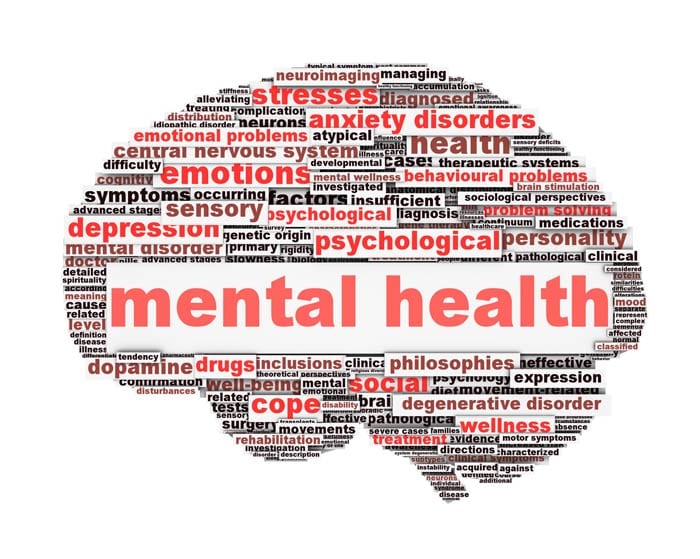A number of occurrences compelled me to write this article. First, a growing number of professional athletes are coming forward with their own mental-health challenges in the hopes of destigmatizing mental illness and encouraging others who are struggling to seek help.
Second, the Covid-19 crisis has seen an increase in mental-health issues, particularly among young people. The stress, isolation, uncertainty of the pandemic have led to a rise in depression, anxiety, substance abuse, and suicide, without the cultural and structural support to address them proactively or reactively in many parts of our society including in sports.
Lastly, I’m seeing the mental-health difficulties that my clients, from young athletes to professionals and Olympians, are facing daily as they strive to stay motivated, calm, and focused in the maelstrom of pursuing their sports goals, doing their best in school, maintaining positive relationships, staying physically healthy, and seeking some semblance of balance in an otherwise unbalanced life.
What is Mental Health and Mental Illness?
This seems like a question with an obvious answer. At the same time, words can have different meanings to different people and I believe in having a shared vocabulary from which to explore deeper questions and issues.
Mental health involves our psychological, emotional, and social well-being. It affects how we think, feel, and act. It also contributes to how we handle stress, relate to others, and make choices. Mental health impacts effective functioning in our daily lives including productive activities (e.g., work, school), healthy relationships (e.g., family, friends), and self-care (e.g., exercise, eating, sleep).
Conversely, mental illness involves thinking, emotions, and behaviors that cause distress, disrupt daily functioning, interfere with positive relationships, and lead to unhappiness. Everyone experiences highs and lows in life, periods of dissatisfaction, and conflicted relationships. These normal vicissitudes of life transition into mental illness when they are on-going and persistent, severely limit normal functioning, and significantly diminish quality of life.
Most Common Forms of Mental Illness
The most reported types of mental illness among athletes include:
- Stress: Feelings of being overwhelmed and unable to cope effectively with unmanageable pressures.
- Depression: Feelings of extreme sadness, loss of interest, and lack of energy.
- Anxiety: Feelings of intense, excessive, and persistent worry and fear.
- Substance abuse: Overindulgence or dependence on an addictive substance.
- Eating disorders: Serious disturbances in a person’s eating habits, expressed as either unhealthy restriction or excessive intake of food.
All of these psychiatric disorders have both immediate and long-term effects on both mental and physical health far beyond the athletic arena.
Are Athletes More Vulnerable to Mental Illness?
The research to date is mixed on whether athletes are more susceptible to mental illness when compared to non-athletes. On one side, sports can be a positive outlet that promotes physical health and vitality, the pursuit of valued goals, and strong relationships. Sports participation can build self-esteem, instill confidence, focus, and composure, develop resilience, teach stress mastery, and provide athletes with the attitudes, beliefs, and tools they need to find success, meaning, satisfaction, and happiness in life.
On the other side, sports can be a source of intense stress, time pressure, expectations from others, injuries, and unrealized dreams. The weight of failure (particularly in the public eye) can lead to stress, depression, anxiety, and other severe forms of mental illness.
Recognizing Signs of Mental Illness
Mental illness can manifest itself in many ways across every aspect of an athlete’s life. Some of the most common signs of mental illness include:
- Changes in sleep patterns (too little or too much)
- Changes in eating habits (restriction and overeating)
- Persistent fatigue
- Excessive and inappropriate emotions (e.g., anger, sadness, frustration)
- Mood swings
- Loss of interest in previously enjoyable activities
- Loss of motivation
- Social isolation
- Unexplained weight loss or gain
- Extreme negativity
- Feelings of worthlessness
- Feelings of apathy and hopelessness
- Decline in athletic and/or academic performance
- Increased use of substances (e.g., alcohol, tobacco, vaping, legal and illegal drugs
- Unexplained personality changes (just not themselves)
As noted above, all of these symptoms, when they last only a short time, are a natural part of the ups and downs of life. When these normal reactions to the challenges of life reach the level of clinical diagnosis is when five or more (in the case of depression) persist for at least two weeks and significantly impair functioning.
What Can Sports Programs Do?
It is incumbent on parents, program leadership, coaches, medical professionals involved with athletes, and the athletes themselves to develop a basic understanding of the most common forms of mental illness, their most frequent symptoms, and a framework and process for addressing mental-health concerns expressed by athletes.
Prevention. Mental-health challenges rarely occur without a clear cause (though there is evidence that some forms of mental illness are genetic). Instead, the culture of the family, school, and sports team can all play a preventive or causative role in the development of mental illness. Each group should explore the values, attitudes, beliefs, and messages that its culture communicates to athletes to ensure that those factors promote mental health and prevent, rather than contribute to mental illness.
Education. I believe strongly that it is a fundamental responsibility of youth sports programs, sports academies, secondary schools with large athletic programs, colleges and university athletic departments, as well as Olympic and professional teams provide opportunities to educate their communities about mental health issues among athletes. Ongoing courses, workshops, readings, group conversations and support, and other resources offered can educate both athletes and others in the sports community about mental health and mental illness, thus increasing awareness, sensitivity, and action to the presence of psychological, emotional, and behavioral difficulties.
Intervention. Given the significant, and potentially life damaging, impact of mental health and mental illness on athletes, it is essential that sports programs have a clearly defined structure and protocol for addressing significant psychological problems that arise in athletes (or coaches and other staff members, for that matter).
First, this framework can start with training the entire staff of a sports program in the basics of mental health and mental illness. This step will create a culture of awareness that will increase the chances of early recognition and intervention.
Second, the sports program can identify a small group of staff members (e.g., coaches, teachers) that covers the entire athlete group within the organization who receive specialized training in the recognition of mental illness. This “mental health team” can recognize and act with even an more attuned level of “radar” to the mental health and well-being of its athletes.
Third, the sports program can establish a referral network of local mental-health professionals, ideally with training in sport psychology or experience working with athletes, who are available on short notice to intervene with an athlete in distress.
Mental health can be actively fostered and mental illness is treatable. Too often, sports act to interfere with mental health and feed mental illness. This outcome is sad for two reasons. First, sports should provide opportunities for healthy personal growth and well-being. Second, because athletes can become so invested in sports, athletic participation can play such a central role in athletes’ development as people and impact their lives in both the short term and the long run. By prioritizing mental health, sports programs can ensure that athletes at every age and level of ability can gain the most benefits from their sports involvement and protect against the toxic aspects of sports that have become more pervasive in recent decades (the latter is an important topic best left for another article).
Is there anything more important than the mental health of our athletes, whether they are U12s or stars on the World Cup? I certainly don’t think so. If they’re really lucky, they’ll be athletes till they are in their 30s, but they’re going to people all their lives. Actively laying the foundation of mental health will not only set them up for success in their sport, but also for success, meaning, fulfillment, happiness, and connection for their entire lives. And, paradoxically, if our athletes are mentally healthy and happy, they’ll actually have a better chance of finding success in our sport.
Finally, if I can help individuals or sports programs develop the structure and protocols related to mental health and mental illness that I described above, please don’t hesitate to contact me (jim@drjimtaylor.com; 415.322.8425).







